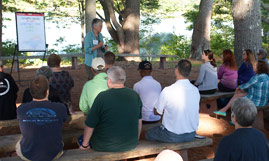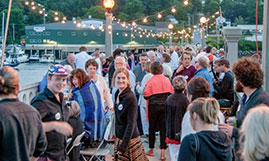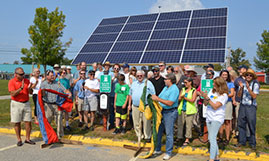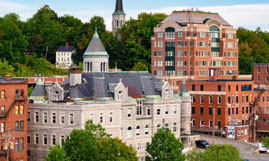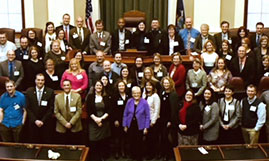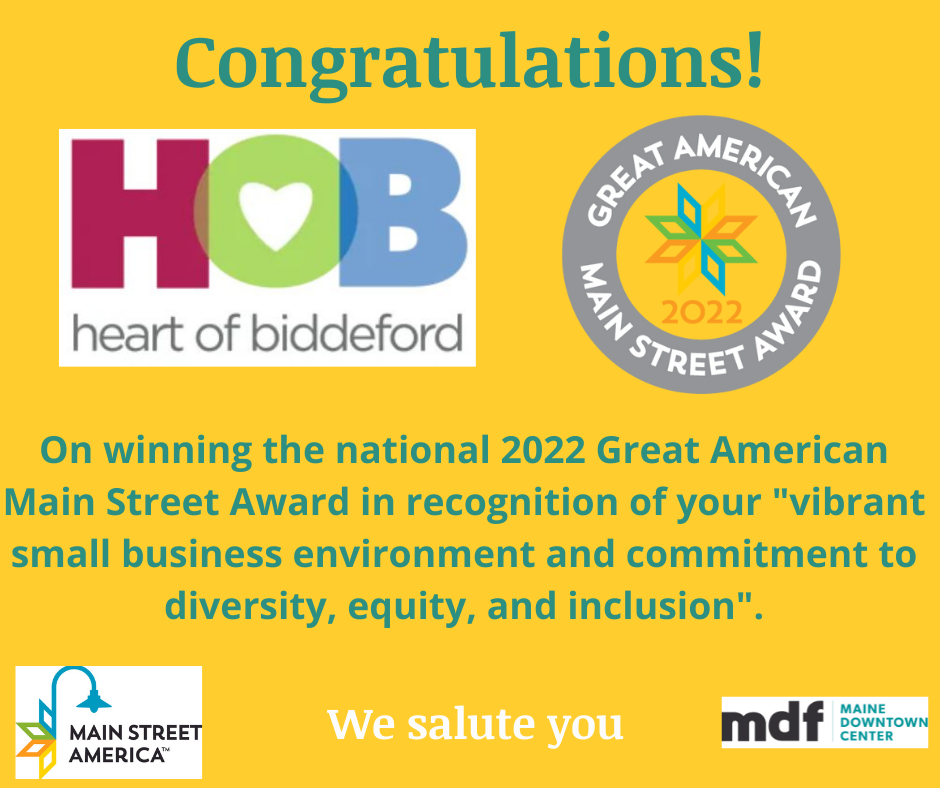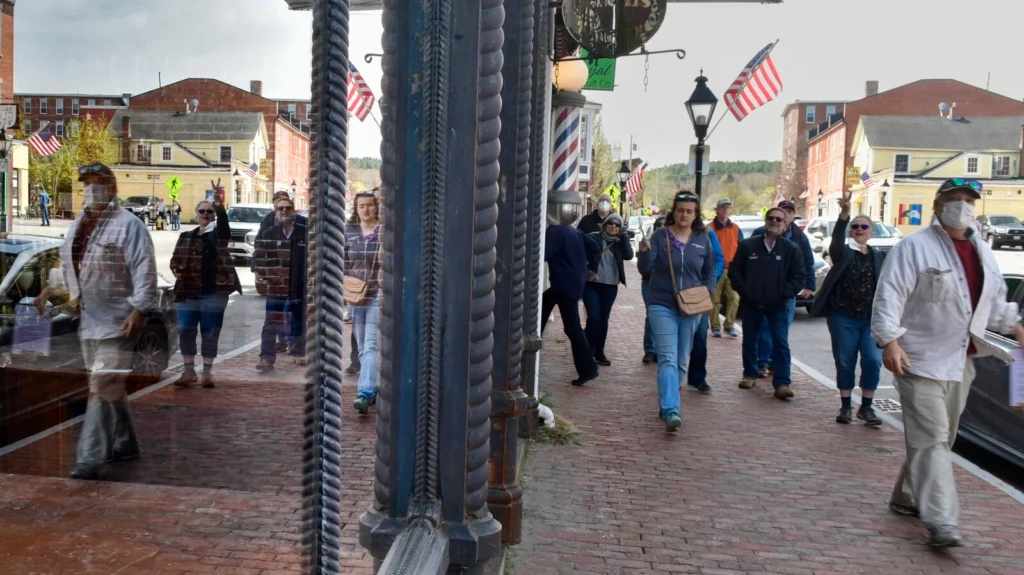Brunswick, MAINE — April 26, 2023 — The Maine Downtown Center, a program of Maine Development Foundation (MDF), is thrilled to announce awards recognizing projects and individuals that have made the biggest impacts in downtown communities in the past year. The awards were given out during a celebratory ceremony today.
“If you are involved in your community or your downtown, these exemplary individuals and projects provide tangible revitalization strategies to take back to your community, “says Anne Ball, Senior Program Director for MDF’s Maine Downtown Center (MDC). “We were very excited to bring together downtown leaders from across the state to celebrate, network, and be inspired. It was great to be back together, celebrating in person, after three years doing so virtually.”
The MDC team gathered nominations for the awards during a competitive process, and proudly announce the following winners:
Downtown Hero Award: Teresa Valliere, Friends of Woodfords Corner. The organization is an MDC Affiliate and has grown quickly and Teresa has been behind nearly everything they’ve accomplished. Teresa has no formal background in economic development, historic preservation, or community organizing, nor is she trained as an urban planner. She has used her background in the food and hospitality industry and her experience as a clinical social worker to build relationships and organize events that helped set in motion the rebuilding of Woodfords Corner, and helped form strategic planning to continue to propel the community forward.
Downtown Project Award: “Manifesting Main – Asset Mapping downtown Ellsworth”. This comprehensive, strategic planning tool was developed over the course of a year by the Heart of Ellsworth organization, an MDC Affiliate. They set a goal to engage a broad spectrum of community members and collectively set a strategic direction for the Heart of Ellsworth, the City of Ellsworth, businesses, and the downtown commercial district as a whole.
“I can only accept this award on behalf of the whole team of neighbors and supporters – the Board, our Muskie grad assistants, the scores of volunteers and the many, many businesses and organizations who partner with us,” says Teresa Valliere, Board Chair, Friends of Woodfords Corner. “We see neighboring is a verb – like the old story of Stone Soup. We just started the effort; others keep contributing more and more and eventually we will all be nourished by the vibrant hub. I am so proud and privileged to live among and work alongside the folks in Woodfords Corner.”
“This award is a resounding validation of community collaboration, and Heart of Ellsworth is honored to be named 2022 Project of the Year,” says Cara Romano, Executive Director, Heart of Ellsworth. “With input from the Ellsworth community, we inventoried downtown assets while looking to the future. We created a manifesto, an informative tool for the 2023 City of Ellsworth comprehensive plan. Community input and timing were the project’s successes.”
Another cause for celebration during the event was the presentation of MDF’s Champion for Forest Communities Award to Charlie Spies, retired CEO, CEI Capital Management, for his dedication to and leadership of work over the last five years within communities participating in the FOR/Maine (Forest Opportunity Roadmap) Initiative. FOR/Maine works to sustain and grow Maine’s forest products industry to $12 billion in economic impact by 2025.
The MDC Annual Awards serve as inspiration statewide for communities and individuals working on downtown revitalization. They recognize outstanding efforts in communities which are part of MDF’s Maine Downtown Center program.
To learn more about Maine Downtown Center and how your community can get involved, visit our website.

